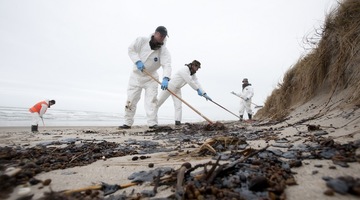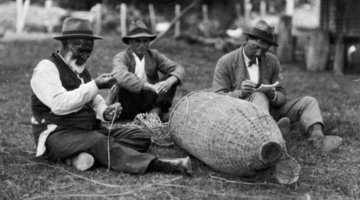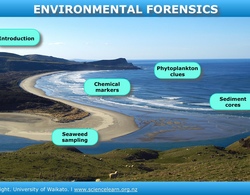

The ocean plays an important part in several Earth systems and cycles. This is hardly surprising, as it covers two-thirds of the planet’s surface. It is difficult to study any of these systems ...
READ MORE

As New Zealanders looking to the future, we are faced with many opportunities – and challenges. These include improving the health of all our people, advancing our economic growth, protecting our ...
READ MORE

NIWA’s research vessel the Tangaroa went on an 8-week voyage to the Ross Sea to survey the marine environment and explore biodiversity in the region. The journey from February until mid-March ...
READ MORE

In this activity, students consider short-term and long-term responses to an environmental disaster such as the Rena. By the end of this activity, students should be able to: describe what might ...
READ MORE

In this activity, students explore Māori perspectives concerning estuaries. By the end of this activity, students should be able to: explain how a Māori legend can show aspects of Māori thinking ...
READ MORE

In this activity, students explore ethical issues related to farming and environmental pollution. They learn about the science involved and the range of perspectives among stakeholders. By the ...
READ MORE

Kelp forests are one of the most biodiverse habitats on Earth. Every nook and cranny is jam-packed with life! This citizen science project wants to understand more about how kelp forests grow and ...
READ MORE

Come and visit Aotearoa New Zealand’s underwater world in this online citizen science project. Discover, count and identify unique fish species that live within our marine reserves ...
READ MORE

By comparing some features of fossilised plants with the same features of plants living today, scientists hope to be able to learn more about the effect of changing carbon dioxide (CO2) levels in ...
READ MORE

With 75% of New Zealanders living within 10 km of the coast, many students will be familiar with estuaries. In scientific terms, estuaries are the interface between the land and the sea – the ...
READ MORE

The rocky shore is a popular topic in primary school science. Below are some Science Learning Hub resources for primary teachers related to the rocky shore in the Living World strand of the New ...
READ MORE

In this recorded professional learning session, Greta Dromgool and Ben Moorhouse from the Department of Conservation unpack conservation education and: introduce some exciting DOC resources aimed ...
READ MORE
Professor Keith Hunter, of the University of Otago, explains how the ocean links several Earth systems, and is like a vast biological, chemical and geological factory. Huge currents act like ...
READ MORE
Stacey Mulgrew, the Land Information representative gives a tour of the ship. Stacey starts on deck and explains the decks of the ship using the ship’s deck plans. She shows where one of the ...
READ MORE
An important aspect of the government’s Long-Term Environmental Recovery Plan after the Rena disaster was to assess the impacts of the pollution and clean-up from a cultural perspective. A ...
READ MORE

Water in the Earth system is influencing all aspects of life on Earth. Pathways, storage, transfers and transformations have an effect on the global climate and human welfare. Within this ...
READ MORE

This timeline lets you see the historical developments in technology related to weather monitoring, measuring and forecasting. It also shows how scientific thinking changed over the centuries as ...
READ MORE

Dr Candida Savage explains the clues she collects in estuaries and fiords, to understand how changes in land use affect these environments. Click on the labels to watch the videos for more ...
READ MORE